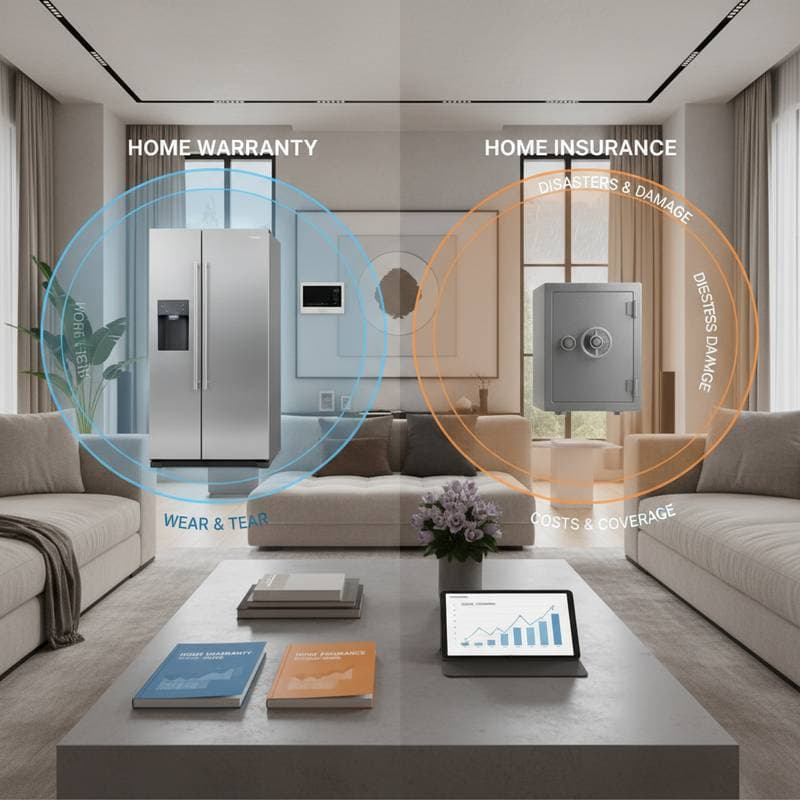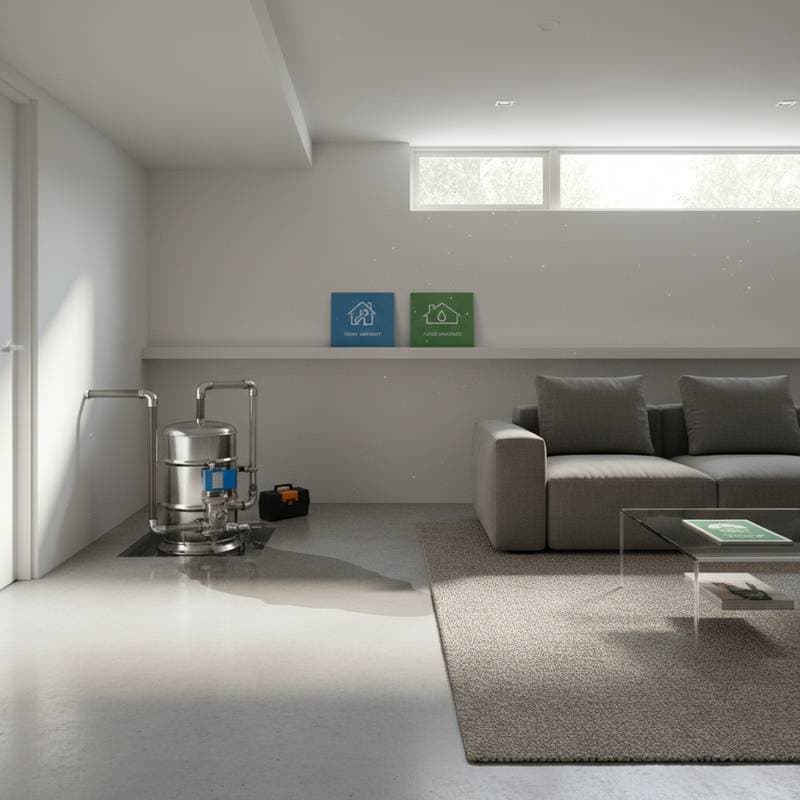Which Covers Your Home Best in 2025: Warranty or Insurance?
A home serves as a secure haven when all components function properly. However, a burst pipe or a failed air conditioner during peak summer heat can shatter that security swiftly. Homeowners frequently face the decision of whether to depend on a home warranty or home insurance for protection. Although the terms appear similar, these options fulfill distinct roles. Understanding their operations, expenses, and applicable situations helps prevent costly unexpected issues.
This guide examines the practical distinctions between a home warranty and home insurance, anticipated costs, and errors that result in inadequate coverage. Readers gain clarity on selecting the appropriate safeguard for their property by the conclusion.
What a Home Warranty Covers
Home warranties function as service agreements. They manage the repair or replacement of essential home elements that malfunction due to regular usage. Standard plans encompass:
- Major systems: heating, ventilation, and air conditioning units; plumbing lines; and electrical wiring
- Appliances: refrigerators, ovens, and dishwashers
- Optional additions: swimming pools, hot tubs, and septic tanks at additional expense
Coverage caps typically fall between $1,500 and $3,000 per item. Homeowners pay a monthly or yearly premium, along with a service charge of $75 to $125 for each technician visit.
Example Scenario
Consider a scenario where the water heater ceases operation. The warranty provider dispatches a service professional. The homeowner covers the service charge, while the provider handles remaining costs up to the policy limit. Should replacement expenses surpass that limit, the homeowner assumes the excess amount.
When a Warranty Helps Most
Home warranties prove most beneficial in these cases:
- Properties equipped with aging systems that exceed original manufacturer guarantees
- Situations where individuals seek consistent expenses for repairs
- Purchases of previously owned homes with unclear upkeep records
Cost Comparison: Warranty vs Insurance
| Coverage Type | Typical Annual Cost | Deductible or Service Fee | Ideal For |
|---|---|---|---|
| Home Warranty | $450 to $900 | $75 to $125 per service call | Addressing wear in older systems or appliances |
| Home Insurance | $1,000 to $2,500 | $500 to $2,500 per claim | Safeguarding the building structure and personal possessions |
Warranties present lower initial costs, yet insurance delivers extensive safeguards. Comprehensive protection for most properties requires both options.
DIY Feasibility and Professional Help
Certain warranty claims allow self-management, such as resetting an electrical breaker or substituting a basic appliance component. Nevertheless, the majority of fixes demand certified experts. Warranty providers generally assign vetted contractors, whereas insurance processes involve claim adjusters and designated suppliers.
Insurance repairs, such as those for roofs or foundational elements, necessitate contractors licensed to comply with regional codes. Verify that any contractor submits detailed written estimates and evidence of their own insurance coverage. For warranty assistance, ensure the technician receives authorization from the provider prior to appointment scheduling.
Common Mistakes Homeowners Make
Experienced property owners encounter these frequent pitfalls:
- Believing a single policy addresses all needs. Warranties and insurance fulfill separate functions.
- Ignoring exclusions. Warranties frequently omit pre-existing issues or faulty setups.
- Neglecting routine upkeep. Providers may reject claims under both types if maintenance lapses appear.
- Failing to review payout caps. Warranties limit reimbursements per item, requiring homeowners to cover overruns personally.
- Assigning insufficient value to the property. Escalating replacement expenses over years can result in shortfalls during reconstruction.
Prevent these issues through yearly policy evaluations and consistent system inspections.
Cost-Saving Strategies
Achieve equilibrium between protection and expenditure via targeted modifications:
- Bundle policies for discounts: Numerous insurers provide reductions when combining home and vehicle coverage.
- Increase deductibles: Elevating this amount reduces premium payments, though it raises immediate claim expenses.
- Evaluate warranty options yearly: Coverage scopes and service reliability differ significantly among providers.
- Seek loyalty or referral incentives: Certain warranty firms lower renewal fees for enduring clients.
- Conduct ongoing maintenance: Replace heating, ventilation, and air conditioning filters every 60 days and drain water heaters once a year to avoid claim rejections.
Such measures maintain affordability while preserving efficacy.
Troubleshooting Coverage Disputes
Claims denials often spark conflicts with providers. Maintain thorough documentation including upkeep logs, invoices, and prior repair details. Capture images of conditions before and after events. Upon a warranty denial, request the exact policy section cited. For insurance matters, demand a formal response from the adjuster. Pursue internal appeals or involve state consumer protection offices as needed.
Proactive record-keeping strengthens positions and accelerates resolutions.
Integrating Coverage for Optimal Protection
Selecting between a home warranty and home insurance involves recognizing their complementary nature rather than choosing exclusively. Insurance defends against abrupt catastrophes that threaten the home structure or contents.
Begin by assessing the existing insurance policy to identify included protections. Next, evaluate the age and state of appliances and systems. If heating, ventilation, and air conditioning units, water heaters, or kitchen devices approach lifespan endpoints, a home warranty prevents substantial repair outlays.
Effective safeguarding extends beyond documents. It encompasses preventive actions, diligent maintenance, and integrated coverage layers.





